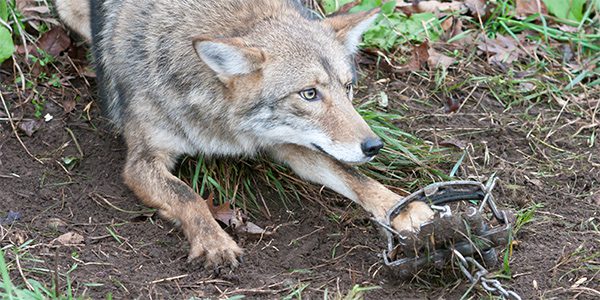Photo credit: Fotolia
Grizzly bear (Ursus arctos horribilis) | ESA status: threatened
Grizzly bear
The grizzly bear, a Western icon, is slowly recovering after near-extermination. Yet grizzlies still face many hurdles, including opposition from the states where they are struggling to make a comeback.
Grizzly bear habitat
After being largely exterminated from their native habitats in the lower 48 states by the 1950s, grizzly populations are slowly on the path to recovery. Currently, approximately 700 grizzly bears exist in the Greater Yellowstone region and just over 1,000 bears roam the wild places in and around Glacier National Park. Still, many populations have yet to achieve full recovery, with only approximately 100 grizzlies residing in the Selkirk and Cabinet-Yaak ecosystems combined, and few if any resident bears in the premium habitat of the North Cascades and Selway-Bitterroot recovery zones.
What are the threats to the grizzly bear?
Grizzly bears face continuing threats from climate change, dwindling key food resources (such as whitebark pine seeds, cutthroat trout, and winter-killed ungulate carcasses), illegal poaching, lack of connectivity among populations, and the negative impacts of a crisscrossing system of roads fragmenting their habitat.
Grizzly bears have been protected under the Endangered Species Act since 1975. Despite scientific evidence clearly showing grizzlies are benefiting from Endangered Species Act protections, federal and state wildlife agencies continue misguided efforts to remove grizzlies from the federal list of endangered and threatened species. And the states of Wyoming, Montana, and Idaho will be quick to allow trophy hunting of these famous bears once management control returns to the states.
What is our vision?
We’re working towards a day when grizzly bears are thriving across the West, with sustainable and connected populations across their historic range.
What WildEarth Guardians is doing to preserve the grizzly bear
Our Wildlife Program is keeping a close eye on grizzly recovery efforts and will ensure that these great bears continue to receive the protections they need to fully recover throughout their historic range.
We sued the U.S. Fish and Wildlife Service in 2017 when it announced Yellowstone’s grizzlies would be stripped of their Endangered Species Act (ESA) protections. In 2018, we prevailed in federal district court, restoring ESA protections and halting planned trophy hunts in the Northern Rockies. In 2020, we won again on appeal.
But grizzlies remain at risk of losing much-needed ESA protections. Recently, the states of Wyoming and Montana filed petitions with the Fish and Wildlife Service to delist grizzlies in the two places the species is finally finding a foothold–the Greater Yellowstone and Northern Continental Divide Ecosystems. Idaho too has filed a petition to delist all grizzlies in the lower-48, despite a stark absence of bears across most historical range south of the U.S.-Canada border.
The ESA is the great bear’s best hope for recovery. We will continue to fight attempts to prematurely delist grizzlies.
Coexistence will also play a large part in successful recovery. We are advancing coexistence best practices in current and future habitat and habitat connectivity corridors. In particular, we are focused on ending lethal “management” of grizzlies in response to conflicts between bears and livestock on federally-managed public lands.
Our Wild Places program also works to recover grizzlies in the American West–by protecting, restoring, and connecting the public lands that grizzlies and other native wildlife call home. You can read about those efforts here.
Historical Significant Actions
Federal wildlife-killing program challenged in Montana January 2023
Guardians Petitions Forest Service: Stop allowing killing of tens of thousands of native carnivores October 2022
Judge rules against federal sheep station grazing in Idaho’s Centennial Mountains April 2021
Advocates target bear baiting in grizzly country in ID, WY December 2018
Yellowstone grizzlies: Court reinstates protections, blocks ID, WY trophy huntsSeptember 2018
Fight Begins to Maintain Protections for Yellowstone Grizzly Bears June 2017
U.S. Fish and Wildlife Service delists the Yellowstone grizzly June 2017
Wildlife Press: Grizzly bear
Idaho, Montana & National Groups Put Feds on Notice on Bitterroot Road Building
Advocates will go to court to protect critical connective ecosystem for grizzly bears
Read more >